Let’s explore the different types of wound dressings and their applications.
A quick peek into the article
Everyone has dressed a wound at some point in their lives, whether putting a band-aid on a paper cut or wrapping a sprained ankle. Today the market is brimming with different types of wound dressings & supplies with wide-ranging benefits and applications.
What is a wound dressing?
A dressing is a material that comes in direct contact with the wound to create a healing environment and protect the wound site from further damage. It helps to:
- Protect the wound bed
- absorb excess exudate (blood plasma and other fluids)
- stop bleeding and start clotting
- wound cleaning and debridement (removal of dead tissue to allow for healing)
- reduce infection
- provide light compression
With thousands of types of wound dressings available in the market, choosing a dressing that works best for your injury can be confusing. Dressings can be classified into a few broad categories that we will be discussing here. It is helpful to understand what products are available to you, the properties they possess, and the kind of wounds for which they are best suited.
10 Types of Wound Dressings & Their Applications
1- Gauze
A gauze dressing is one of the oldest medical materials, having existed for thousands of years. It is a fabric, usually made of cotton, available in woven and non-woven forms. Gauze rolls and pads are extensively used in the medical field for wound care.
- Properties: absorbent, soft, breathable
- Uses: securing wounds, stopping bleeding, cleaning wounds
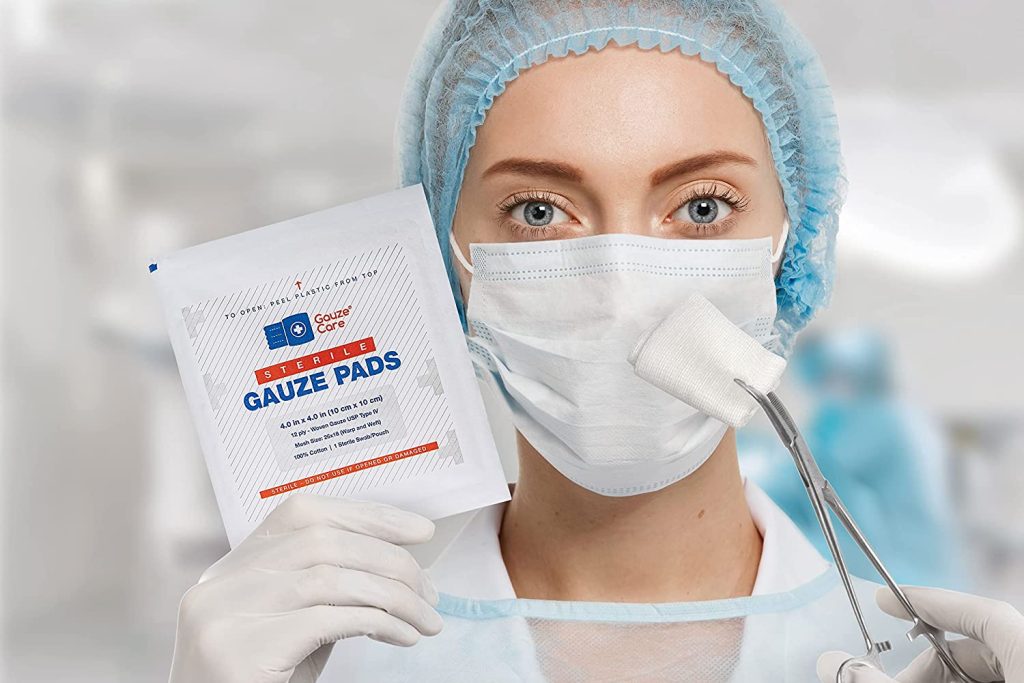

2- Transparent films
Transparent film dressings are made of thin, clear polyurethane sheets that are adhesive on one side. They adhere to the skin around the wound but not the wound itself due to the moisture of the exudate and allow the wound site to be monitored.
- Properties: transparent, self-adhesive, moisture retentive
- Uses: fixing tubes and catheters, securing the primary dressing
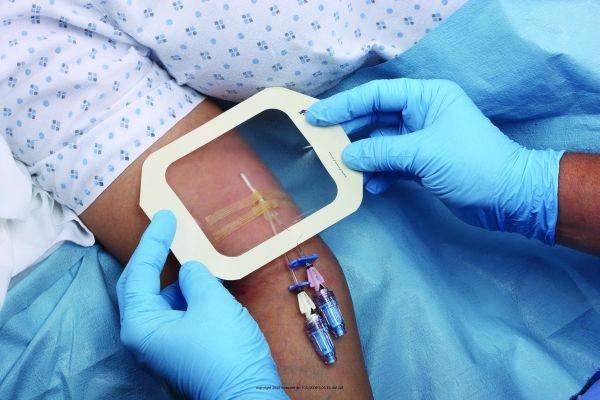

3- Foams
Foamed polymers (like polyurethane) are molded into different shapes and sizes to make foam wound dressing pads. They are comfortable and absorbent, making them a popular wound care material.
- Properties: absorbent, insulative, soft
- Uses: as a primary and secondary dressing for wounds with minimal to heavy exudate
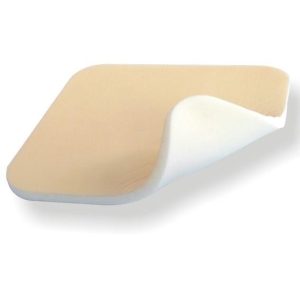

4- Hydrocolloids
Hydrocolloids are hydrophilic substances, like gelatin, pectin, and cellulose. Hydrocolloid dressings are composed of hydrocolloids with an extra adhesive layer. They are occlusive and react with the exudate to create a gel that enables a good healing environment.
- Properties: easy to use, flexible, impermeable, comfortable, waterproof
- Uses: treating minor burns and bed sores, dressing difficult areas
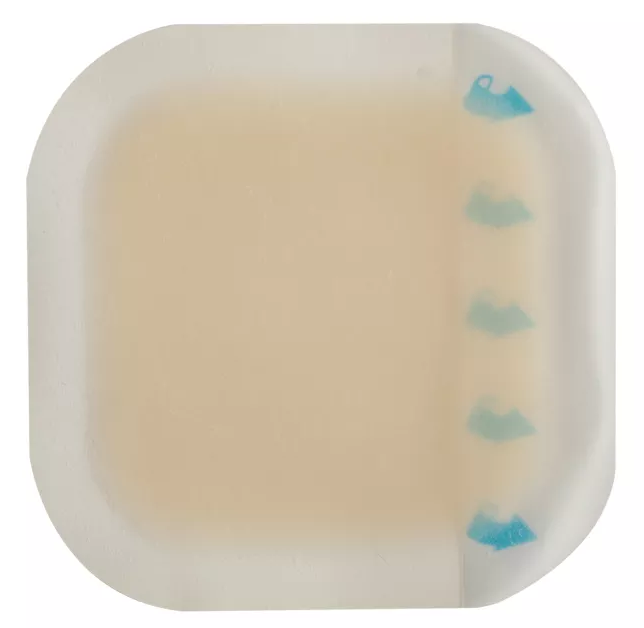

5- Alginates
Alginates are derived from algae or seaweed. Calcium alginate dressings can absorb up to twenty times their weight, making them ideal for dressing infected wounds. They also react with the exudate to form a gel-like substance that promotes healing.
- Properties: highly absorbent, biodegradable, waterproof
- Uses: treating wounds with moderate to heavy exudate, combating infections


6- Hydrogels
Hydrogels are of 80 to 99% water or glycerin and are primarily used to add moisture to dry wounds. They are permeable to gas and water and are not effective at warding off bacteria. Hydrogel dressings are usually non-adhesive and need a secondary dressing (like medical gauze dressing or adhesive film) to secure them.
- Properties: moisture retentive, permeable, non-absorbent
- Uses: breaking down necrotic tissue and promoting cell growth
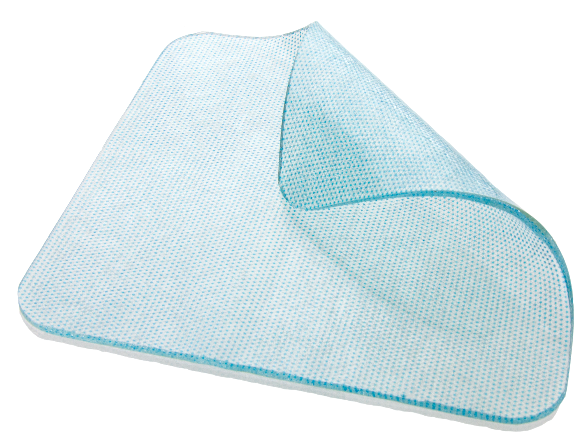

7- Collagen
Collagen wound dressings deposit new collagen fibers to the wound bed that can stimulate the growth of new tissue. It acts like a second skin, providing a foundation for the accumulation and growth of new cells. They are found in a variety of forms like sheets, pads, gels, particles, etc.
- Properties: versatile, absorbent, pain-relieving, anti-infective, anti-inflammatory, non-adherent
- Uses: as primary dressing for wounds with stalled healing, with minimal to heavy exudate, and skin graft and donor sites
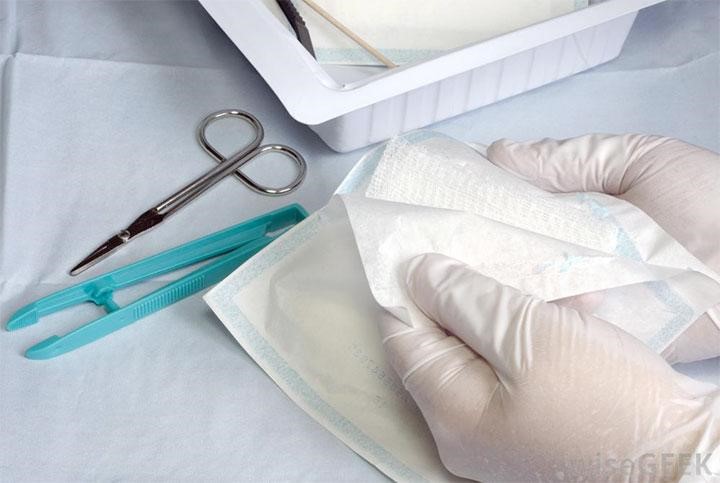

8- Silicone Dressings
Synthetic polymer silicone is present in multiple different forms and has a variety of uses. Among the various types of wound dressings, silicone is a convenient option because it stays tacky for a long time and through multiple reapplications without sticking to the wound itself, offering protection and a good healing environment. Additionally, its anti-microbial properties make it a good dressing option for infective wounds.
- Properties: waterproof, highly absorbent, adhesive, non-toxic, anti-microbial
- Uses: as dressing for heavy exuding wounds like skin tears and abrasions, blisters, skin grafts, diabetic ulcers, etc.
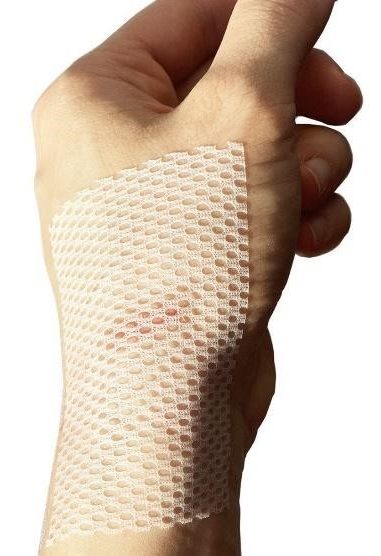

9- Composite dressing
Composite dressings are composed of a combination of different layers of dressing. These layers usually consist of a non-adherent inner layer for safety during dressing changes, an absorptive middle layer for maintaining the moisture balance of the wound, and a semi-permeable outer layer for protection against bacteria and infections. They are used as both primary and secondary dressings.
- Properties: absorbent, self-adhesive, breathable, waterproof
- Uses: as dressing for surgical wounds, cuts, abrasions, and wounds minimal to moderate exudate
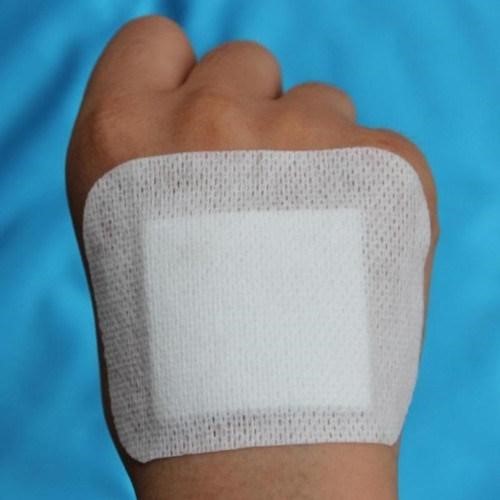
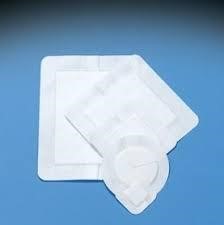
10- Anti-microbial dressing
The anti-microbial dressing is a type of anti-bacterial dressing that utilizes agents that kill microorganisms. They can be classified into disinfectant, antiseptic, and antibiotic types. Some of the aforementioned dressings, like alginates, foams, and hydrocolloids, may also possess antimicrobial properties, making them suitable for use on infectious wounds.
- Properties: easy to use, anti-infective, non-toxic, cost-effective, flexible
- Uses: as a dressing for infected wounds, ulcers, and surgical sites
From many types of wound dressings choosing the ideal dressing is a complicated task but we hope we have helped you better understand the diverse types of wound dressings in the market, so you can make more informed choices while providing medical aid at home.
Disclaimer: In case of serious injuries, always contact a medical professional and do not attempt to treat the wound at home.
